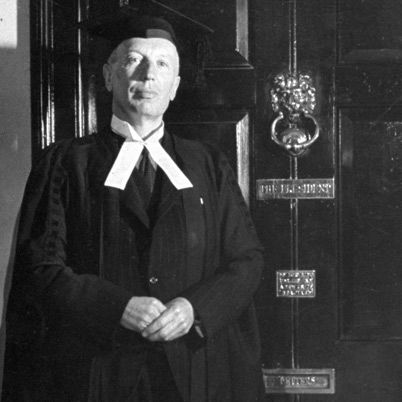You are viewing the article John Venn at Tnhelearning.edu.vn you can quickly access the necessary information in the table of contents of the article below.

(1834-1923)
Who Was John Venn?
A fellow of Caius College, Cambridge, mathematician John Venn developed George Boole’s symbolic logic, and in his Logic of Chance (1866) worked on the frequency theory of probability. He is best known for Venn diagrams, pictorial representations of the relations between sets that have become an oft-used tool in the teaching of mathematics and logic, among other concepts.
Early Life and Education
Venn was born on August 4, 1834, in Kingston upon Hull, England, to Martha Sykes and Reverend Henry Venn, a member of the Anglican clergy. The younger Venn received an education from tutors and at schools in Highgate and Islington, later earning his degree in mathematics in 1857 from Gonville and Caius College at Cambridge University. Having earned a fellowship there as well, Venn would establish a long-term career at his alma mater, becoming a lecturer in 1862 and being appointed college president more than four decades later.
By the end of the 1850s, following his father’s religious tradition, Venn was also ordained as a priest for the Church of England and did religious work for a short time before returning to Caius. He eventually resigned from the clergy in the 1880s, nonetheless continuing to remain involved in the church.
Venn Diagrams
In 1866, Venn published TheLogic of Chance, a groundbreaking book that espoused the frequency theory of probability, offering that probability should be determined by how often something is forecast to occur as opposed to “educated” assumptions. Venn then further developed mathematician George Boole’s theories in the 1881 work Symbolic Logic, in which he highlighted what would become known as Venn diagrams.
These graphics were pictorial representations of the relationships between sets, with similar diagrams having been used by Gottfried Leibniz and Leonhard Euler. Though quite complex in their orientation and application, Venn diagrams have become a trademark tool over the years in the teaching of introductory math and logic, as well as being used by popular media to illustrate relationships between groups and concepts.
Other Publications
Venn was elected to the Royal Society in 1883 and continued to publish other works, including The Principles of Empirical or Inductive Logic (1889) and volumes on the history of Cambridge and a list of its alumni, compiled with the aid of his son, John Archibald Venn.
Death
Venn died on April 4, 1923, in Cambridge, England.
QUICK FACTS
- Name: John Venn
- Birth Year: 1834
- Birth date: August 4, 1834
- Birth City: Kingston Upon Hull
- Birth Country: England
- Gender: Male
- Best Known For: Mathematician John Venn developed George Boole’s symbolic logic and is best known for Venn diagrams, which pictorially represent the relations between sets.
- Industries
- Education and Academia
- Astrological Sign: Leo
- Schools
- Gonville & Caius College, Cambridge
- Death Year: 1923
- Death date: April 4, 1923
- Death City: Cambridge
- Death Country: England
Fact Check
We strive for accuracy and fairness.If you see something that doesn’t look right,contact us!
CITATION INFORMATION
- Article Title: John Venn Biography
- Author: Biography.com Editors
- Website Name: The Biography.com website
- Url: https://www.biography.com/scientists/john-venn
- Access Date:
- Publisher: A&E; Television Networks
- Last Updated: February 26, 2021
- Original Published Date: April 2, 2014
Thank you for reading this post John Venn at Tnhelearning.edu.vn You can comment, see more related articles below and hope to help you with interesting information.
Related Search:



